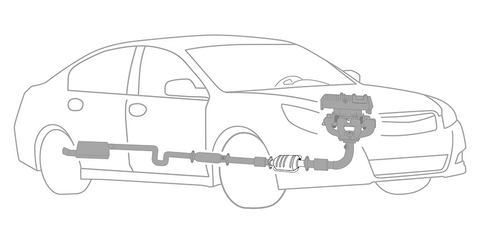Pricing Information
Reasons why you may consider a catalytic converter replacement
Located on the underside of your vehicle, the catalytic converter helps clean up vehicle emissions before expelling them into the environment.
Catalytic converters contain honeycomb-like structures coated with platinum and palladium that help minimize the harmful effects of carbon monoxide, hydrocarbons, and nitrogen oxide produced by your vehicle’s engine.
These harmful elements pass through two stages: the reduction catalyst stage and the oxidation catalyst stage.
- During the reduction catalyst stage, nitrogen oxide is converted into oxygen and nitrogen gases
- During the oxidation catalyst stage, carbon monoxide and hydrocarbon are oxidized
The catalytic converter also relies on the oxygen sensor to detect the correct level of oxygen introduced in the oxidation catalyst stage.
Routine exhaust system maintenance can help ensure your catalytic converter is always working optimally and reduce the likelihood of it releasing harmful and often deadly chemicals into the environment, or into the cabin of your vehicle.
A damaged catalytic converter must be replaced at the first sign of trouble.
Clogged catalytic converters are also dangerous. If you try to accelerate but your vehicle fails to speed up, the catalytic converter may be clogged, which will quickly cause your engine to fail.
The smell of sulfur also indicates a bad catalytic converter. A damaged oxygen sensor can lead to the catalytic converter operating less efficiently and reducing its lifespan.
If there is not enough oxygen, the harmful gases will fail to diminish, while too much oxygen can cause the converter to overheat and fail.
Our service staff will conduct tests to determine the exact cause of a malfunctioning catalytic converter.



